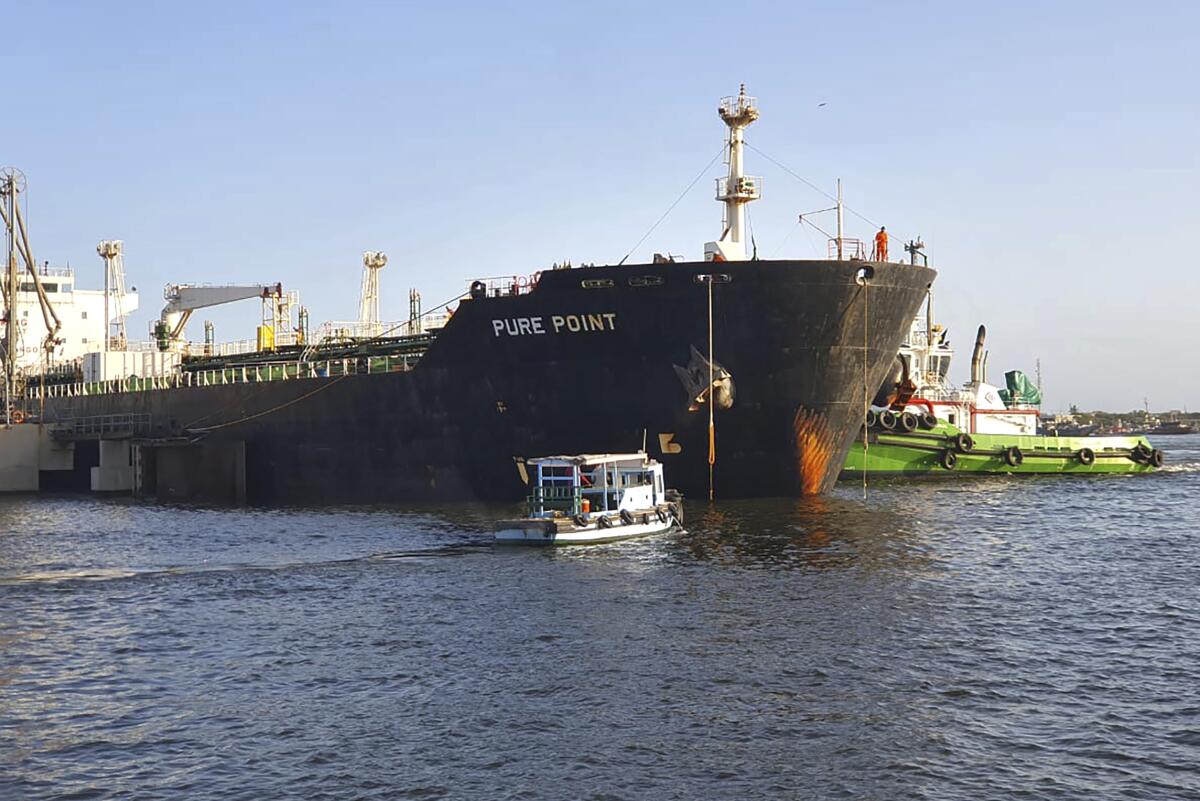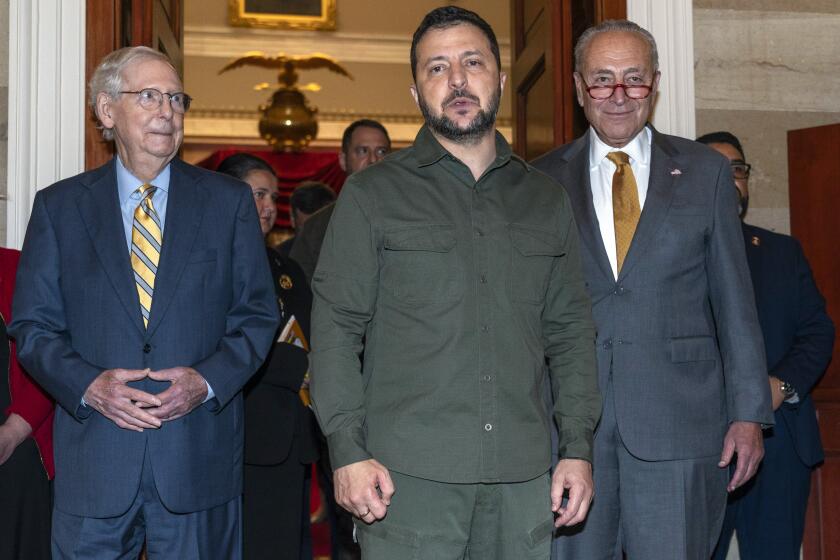Opinion: Putin is using high oil prices to test support for Ukraine. Congress’ dysfunction plays right into his hands

- Share via
Wars are won and lost on battlefields. But public finance plays a critical role in determining what the combatants can afford. This is particularly true for a long war, as Russia’s invasion of Ukraine has already become.
In declining to include funding for Ukraine as part of the recent deal to avert a government shutdown, Congress sent a signal of encouragement to Russian President Vladimir Putin. Meanwhile, the increase in global oil prices (now above $90 per barrel) is providing new revenues for Russia’s war effort.
Congress needs to restore funding for Ukraine, a move supported by both Senate Majority Leader Charles E. Schumer (D-N.Y.) and Senate Minority Leader Mitch McConnell (R-Ky.). Just as important, the U.S. must take further steps to reduce Russia’s oil revenues.
Biden says there’s ‘not much time’ to keep aid flowing to Ukraine and Congress must ‘stop the games’
Congressional supporters of Ukraine say they won’t give up after a bill to keep the federal government open excluded Biden’s request for more security aid.
John McCain, the late U.S. senator from Arizona, once famously quipped that Russia is “a gas station masquerading as a country.” Even before its attack on Ukraine in February 2022, when Russia had full access to international markets, nearly half of its government revenues came from energy taxes and energy exports. Now almost all of its foreign-exchange revenues come from oil exports.
The price cap on Russian oil, pioneered by Treasury Secretary Janet Yellen and introduced by a G-7-led coalition in late 2022, was designed to reduce those revenues while keeping Russian oil on the market to hold world prices in check. An initial price cap of $60 per barrel was introduced in December 2022, and through the first half of 2023, the cap helped reduce the Kremlin’s revenues by 45% year over year. Many hailed it as a success.
The price cap applies to shipments of Russian oil that use services from price cap coalition countries. For example, shipments that travel on Greek-owned ships, or are insured by U.K. insurers or re-insurers, must comply with the price cap. The G-7 coalition also devised a system to require a party to the transaction to provide an attestation that the price is below the cap.
Russian attacks plunged Ukrainian cities into darkness last winter. War-weary citizens brace for more blackouts amid a rush to protect Ukraine’s electrical grid.
But two things have happened in the last 10 months to make the price cap less binding. First, Russia acquired its own fleet of tankers, primarily older and in some cases damaged ships that were not seaworthy by international standards and not participating in the market. Those tankers not only help Russia subvert the price cap, they are also more at risk of causing a catastrophic spill or other environmental disaster. Second, Russia is allegedly offering (or arranging) false attestations, dishonestly attesting to prices below the cap.
In response, some commentators have thrown up their hands and claimed that the price cap policy must be abandoned — a response that the Kremlin would greet with delight. Just as markets adapt to new circumstances, so must policymakers — which means increasing the pressure on Russia’s oil revenues.
The first step is to tighten enforcement of the price cap and lean on shippers, insurers and other service providers to screen for false attestations. If that is not enough, the U.S. should work with its partners and allies to impose transit fees to reduce the revenue going to Russia. The G-7 coalition, for example, could set up a sort of tollbooth at crucial chokepoints — such as the Danish straits — that Russian oil tankers must traverse to reach global markets. The maritime tollbooth could then charge all Russian oil shipments the difference between the price cap and the current world market price.
In a letter urging Congress to replenish funding for Ukraine, the Pentagon says it has already been forced to slow down resupplying some troops.
If this does not stop Russian oil sales at high prices, the U.S. could use secondary sanctions to target any transaction involving Russian oil above the price cap, regardless of whether it is carried on Russian, Cameroonian or Greek ships and insured by British or Russian companies. Secondary sanctions would mean that any entity tied to a Russian oil shipment above the current $60-per-barrel cap would risk losing the ability to engage with the U.S. financial system if caught.
Russia is earning fistfuls of money from its oil sales, and using the revenues to buy tanks, pay soldiers and keep the war out of the minds of ordinary Russian citizens. High oil prices enable Putin to test Western democracies’ resolve, and the dysfunction on Capitol Hill plays into his hands.
That makes maintaining the oil price cap, with added protections, all the more important for reducing Putin’s ability to continue fighting. The G-7 and its allies have the economic tools to undermine Russia’s war effort. It is time to use them.
Simon Johnson, a former chief economist at the International Monetary Fund, is a professor at the MIT Sloan School of Management and a co-author of “Power and Progress: Our Thousand-Year Struggle Over Technology and Prosperity.” Catherine Wolfram, a former deputy assistant secretary at the Treasury Department, is a professor of energy economics at the MIT Sloan School of Management.
More to Read
A cure for the common opinion
Get thought-provoking perspectives with our weekly newsletter.
You may occasionally receive promotional content from the Los Angeles Times.













